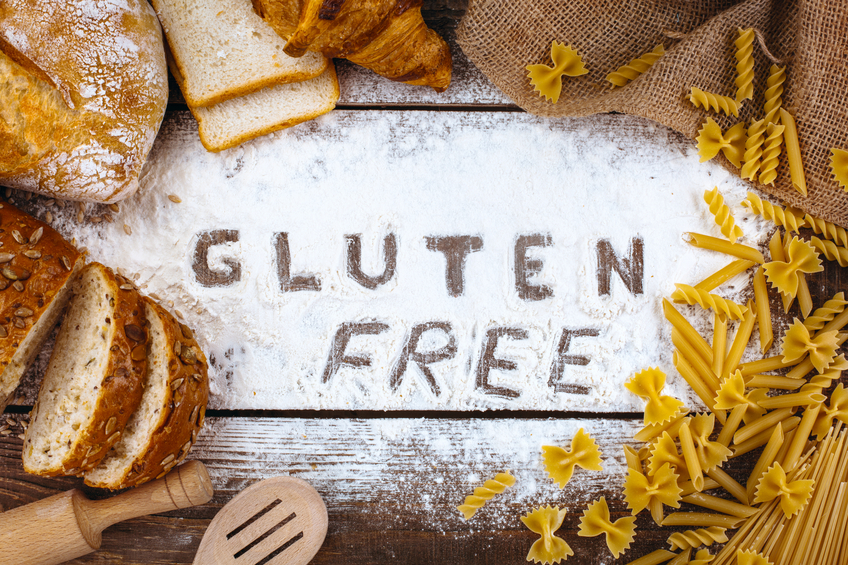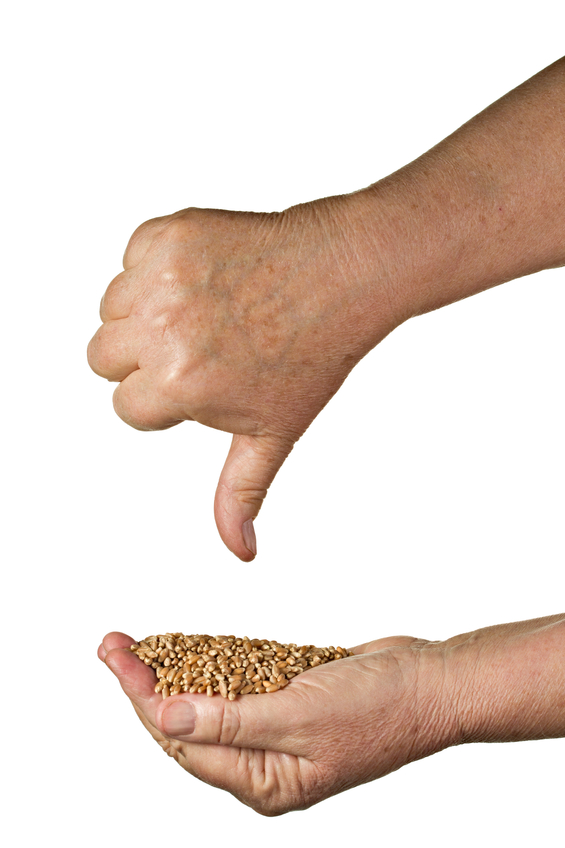Making the switch to gluten-free is a daunting prospect, but it needn’t be a living nightmare. Foodie blogger Michelle Kickham talks through some essential tactics for easing the pain when you transition to a gluten-free diet…

Whether you’ve Been diagnosed coeliac or just want to try out the ‘gluten-free diet’, there’s no denying that the idea of removing all gluten from your meals is daunting. It’s not easy, but following a few simple tips can make the transition a whole lot smoother. I’ve rounded up some crucial pointers on moving to a gluten-free lifestyle, so you don’t have to learn them the hard way!
Get the knowledge – educate yourself
The most important, most overlooked thing to do before going gluten-free is to learn what you can and cannot have. You’ll be spending a lot of time reading the ingredient labels of food items from now on, so it’s important that you know what contains gluten, even if it doesn’t explicitly state it. Most people think of wheat as the only gluten-containing grain – but barley, rye, and many others also contain the stomach-wrenching protein. Watch out for spelt-based products, too. While these are often seen in the ‘gluten-free’ aisle in the supermarket, they do in fact contain it and can wreak havoc on your tummy.
Assuming you have been diagnosed coeliac, it’s important that you also learn about coeliac disease itself. It’s a serious illness which, if not managed correctly, can lead to detrimental health defects such as malnutrition, osteoporosis and even colon cancer. I have explained the ins and outs of coeliac disease before, and they can be found both on my website (lifeliftsandlabcoats.wordpress.com) and at FreeFromHeaven.com. I highly recommend reading them (and no, I’m not just trying to self-promote myself).
Become a member of Coeliac UK
If you live in the UK or Ireland, you should strongly consider becoming a member of Coeliac UK for (at least) the first year of managing coeliac disease or a strict gluten-free diet. The society provides help and support to coeliac disease sufferers, making that initial period much easier to handle. It offers both financial and dietary assistance, both online and via peer support groups. The financial element is often overlooked but is extremely useful: anyone eating gluten-free knows how expensive the diet is to maintain.
What helped my sister and I the most in our first year with coeliac disease was the famous ‘Food Book’ – a detailed book outlining approved food items and products. We took it everywhere we went and rarely ate anything outside of those lists! While you don’t have to be that strict, it definitely helps in the learning process of what you can and cannot have. They also provide monthly updates on new products and names of restaurants offering gluten-free dishes.
Swap out the staples
So you’ve just been diagnosed coeliac. Your favourite foods are out of the question and you’ll be surviving on a diet of rice, corn and vegetables, right? Nah. Luckily, with the rise of the ‘gluten-free fad’ there are now more than enough alternatives available that, in some cases, taste better than their gluten-containing counterparts.
Breads and pasta are the two major staples to be replaced first, and in my opinion the best buys out there would be PureBred or BFree Foods. PureBred offers a fabulous range of breads and rolls (that don’t fall apart when you try and take a bite!) and BFree’s pittas taste just like the real thing! As for pasta, opt for rice or corn pasta if you prefer it al dente, or try brown rice pasta for a softer consistency.
When it comes to cereals, sauces and sweets (which may or may not be ‘staples’ in your diet!) your best bet is trial and error, as everyone has different tastes. Happily, most plain chocolate is gluten-free, and more and more sauces are using cornflour as a thickening agent – just be sure you check the label.

Watch out for oats
Oats are controversial – they’re naturally gluten-free and so shouldn’t provoke an inflammatory response. But avenin, a similar protein to gluten, is found in oats and can cause a reaction in a small proportion of coeliacs. The proteins’ chemical natures are so close that the immune system ‘sees’ avenin as gluten and responds to it as such. As a result, it is best to avoid oats, even ones certified gluten-free, for the first two years of your gluten-free diet. This ensures that you fully restore the small intestine’s integrity and reduce the auto-antibodies in your bloodstream to an acceptable level.
After this time, if you want to try re-introducing oats into your diet take care they are certified gluten-free. This will ensure you don’t eat oats contaminated by other grains during processing.
Some final tips…
As daunting as a gluten-free diet may seem, it gets easier once you learn the basics. After a few years you’ll barely need to glance at ingredient lists and you’ll eventually forget what real bread tastes like. Here are some final tips to get you by during the first few months:
Plenty Of Jam AND Toast
Gluten-free breads can taste quite strong and bitter, so use richly flavoured spreads such as jams and relishes. Try toasting the bread too, as it resembles ‘real’ bread more this way!
Try Buckwheat Instead of Oats
I have always been a porridge-addict, and the first thing that came to mind when I was diagnosed was, “What will I have for breakfast?!” Relax, porridge-people – buckwheat flakes make a perfect alternative to oats and pack a powerful nutritional punch, too.
Plan Ahead
If you’re planning on eating out, call ahead to ensure the restaurant caters for coeliacs –and clarify that you are coeliac, not just following the ‘fad’.
Don’t break it
No matter how desperately you want that piece of cake – don’t break the gluten-free diet! Not only will this cause a damaging autoimmune response; it won’t feel too good either. My sister lapsed once after a year gluten free… needless to say she didn’t do it again.
 Michelle Kickham is a doctoral candidate in Immunology and Organic Chemistry and a current Irish Research Council scholar. Michelle believes that science holds the power to make a real difference and her goal is to explain the science behind health claims, offer advice and tips, as well as sharing healthy recipes to suit almost any diet.
Michelle Kickham is a doctoral candidate in Immunology and Organic Chemistry and a current Irish Research Council scholar. Michelle believes that science holds the power to make a real difference and her goal is to explain the science behind health claims, offer advice and tips, as well as sharing healthy recipes to suit almost any diet.
For more information, visit www.lifeliftsandlabcoats.wordpress.com
